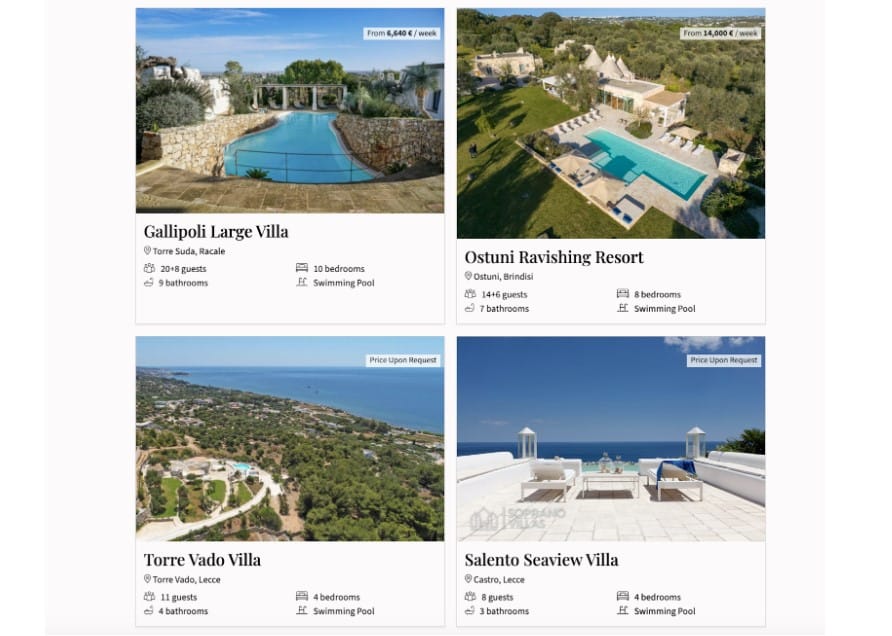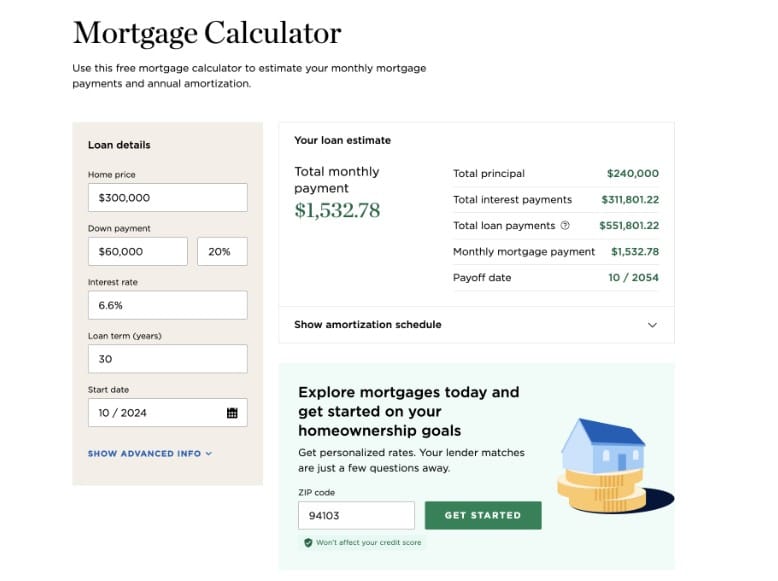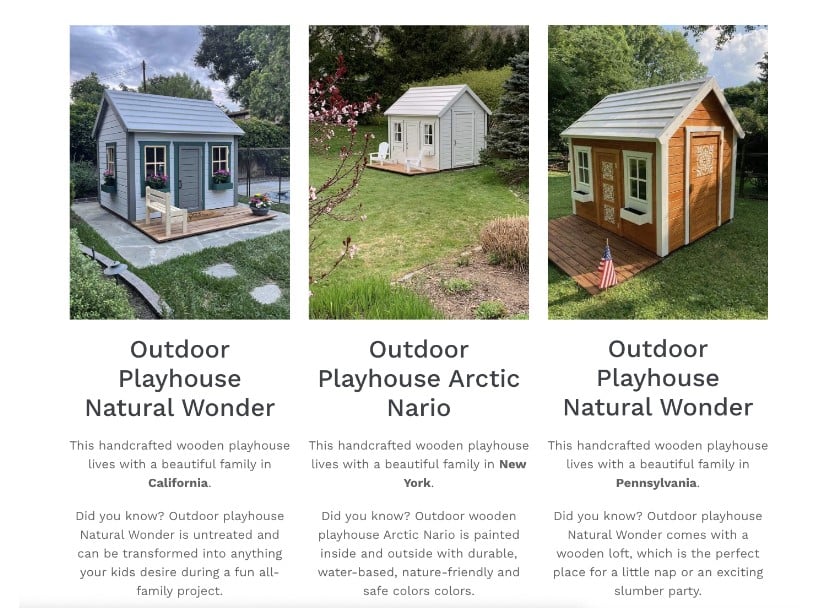Your website is your storefront, which is why you need to put your best foot forward if you want to attract your target audience.
But, unlike traditional mall, a digital marketplace is huge, meaning that you compete against thousands of other companies.
With more than a billion websites populating the web, it’s getting harder to stand out and capture your potential customers’ attention. Since there’s too much noise, you need to optimize your website and make sure it’s packed with valuable content that will both educate and entertain your potential customers.

Source: depositphotos.com
This article will list the types of content you need to have on your website in order to cut through the digital clutter and become a go-to resource for your audience.
1) Amazing Visuals
When it comes to making a great first impression, nothing beats visually appealing photos, illustrations, and graphics. This is where tools like Freepik’s image generator really shine, helping you create stunning visuals that capture attention and communicate your message effectively.
No wonder articles with images get 94% views more than those without.
Apart from helping you catch your potential customer’s attention right from the get-go, stunning visuals will also stay longer in their minds.
But one of the most important benefits of putting out high-quality images is presenting your product or service in the best possible light.
Remember that when people want to purchase something online, they don’t have an opportunity to see, touch, or inspect it in person. That’s why your visuals are the only shot you have to convince potential customers that your offering is worth purchasing. Images or videos can highlight the features, value, and quality of your product in a way that words never could.
For example, the SopranoVillas Puglia listings page showcases their rentals with the help of breathtaking images that manage to capture each property’s allure, interior luxury, and surrounding natural beauty in great detail. Potential clients are easily immersed in the ambiance of each villa and prompted to explore it further.

Source: SopranoVillas
2) FAQ and Self-Service Resources
Helping your potential and existing customers find answers to their product or service-related questions makes a difference between a delightful customer experience and bouncing off your website.
Live chat and phone might be must-have customer support channels. However, if we bear in mind that more than 50% of all customers report feeling stressed and exhausted when dealing with customer support, it’s evident why offering self-service resources such as a FAQ section, help center, or knowledge base is essential for ensuring a more convenient way to access the information they need.
So, the trick is to offer an exceptional customer experience without forcing your audience to get in touch with support agents. This is a win-win situation since you’ll both make it easier for your website visitors to get the answers to their questions while freeing up your support agents’ time to deal with more complex queries.
Pergola Kits USA has a dedicated learning center on their website so that potential customers can educate themselves about all the products and their specifications. The brand also lists links to all assembly manuals, thus empowering customers to confidently pick the right product for their needs and successfully install it.

Source: Pergola Kits USA
3) Interactive Content
Nothing says engagement like interactive content that transforms your website visitors from passive recipients of your promotional message to active participants in creating their own personalized experiences with your brand. By incorporating a dynamic QR code generator to create personalized links, you can enhance user engagement by directing visitors to tailored content and exclusive promotions.
Unlike traditional, old-school content like blog posts and other text-based resources, interactive infographics, quizzes, polls, calculators, or surveys encourage two-way communication. These engaging formats require your audience to provide input based on which they’ll be served highly personalized, unique results. So, instead of consuming generalized content that’s the same for everyone, this way, they’ll be engaged in a dynamic exchange that caters to their individual needs and preferences.
Besides boosting engagement and adding value to your website visitors, interactive content also helps you collect customer data you can later use to inform your marketing initiatives and provide an even better experience to your audience.
NerdWallet’s Mortgage Calculator helps their audience solve a problem and find out how much their monthly payments would be without having to grapple with complex formulas and crunch these big numbers manually.

Source: NerdWallet
Softwarehow’s free online bulk image compressor similarly engages website visitors as it offers an easy-to-use image optimization tool. This way, users get instant value and are encouraged to interact with the website and explore other solutions.

Source: softwarehow.com
4) Social Proof
When it comes to buying products or services online, trust is something that can make or break your business.
The fact that your potential customers can’t touch, feel, or try on the items they want to order is a factor that heavily influences their purchasing decision. They have no idea if they will get a quality product or a dud, and you can’t blame them—maybe your potential customers have never heard of you before, so why should they trust you?
Similarly, giving out personal information such as a credit card number requires quite a leap of faith under these circumstances.
That’s where social proof comes into play to convince hesitant prospects that your brand is legit and trustworthy. An average customer reads 10 online reviews before they decide to click the Buy Now button, so having a dedicated section with different types of social proof on your website could be the factor that will push indecisive prospects off the fence and get them to convert.
Make it easier for your website visitors to access social proof by sharing happy customers’ reviews, testimonials, or user-generated content showing people enjoying your products. Case studies are more suitable for B2B marketing, as they provide concrete examples of how your product or service helped others solve a certain pain point and achieve success.
This kind of content will demonstrate the tangible benefits of your product or service, thus helping you instill confidence in your potential customers.
For example, WholeWoodPlayhouses has a customer gallery showcasing photos of real families enjoying their beautifully crafted playhouses. These stories inspire potential buyers and build trust through authentic visuals.

Source: WholeWoodPlayhouses
5) Detailed Blog Posts and Step-By-Step Guides
Although visually oriented and bite-sized content has become increasingly popular, good ol’ blog posts are still a powerful tool for establishing thought leadership and generating engagement.
Remember that some people prefer to read over watching videos or scrolling through infographics, so make sure you cater to their needs and preferences.
However, to achieve these goals, you need to come up with exhaustive blog posts and comprehensive guides packed with valuable information.
These long-form pieces allow you to explore relevant topics in-depth, as well as provide valuable insights, practical advice, and thorough analyses that your audience will appreciate. Use your blog post to address your target audience’s pain points, answer their questions, or help them navigate a complex process.
For example, Eden Emerald Mortgages’ step-by-step guide to getting a home loan in Australia breaks down the process into smaller, more manageable steps. Given that many people, especially first-time home buyers, find this process overwhelming, this resource makes it more accessible and easy to understand.

Source: Eden Emerald Mortgages
Similarly, EXT Cabinets uses a detailed blog post on flame tamers for gas grills to answer their customers’ questions. This article is a great resource on the topic as it includes tables with back-to-back comparisons of different types of flame tamers and explains their features and benefits to make it easier for potential customers to make a purchasing decision.

Source: EXT Cabinets
6) Explainer Video
Different people have different learning styles, which means that not all your website visitors want to read blog posts, guides, or help articles. Some of them feel more comfortable watching videos to familiarize themselves with a particular topic, especially when this requires grasping complex concepts or learning how something works.
Plus, if we take fleeting attention spans into account, it’s obvious why sometimes it’s much better and more effective to show than tell.
Thanks to the combination of moving images, audio narration, and storytelling, video is a dynamic format that can easily generate engagement. No wonder that almost 80% of marketers report that including video has helped them increase sales. In a similar vein, 84% of people say they were convinced to buy a product or service after watching a brand’s video.
Explainer videos lend themselves exceptionally well for demonstrating how your product or service works, highlighting its key features, and showcasing its value proposition in a memorable way. Being relatively brief, this type of video keeps your audience’s attention long enough.
The thing is that trying to explain how a certain tool or platform works through text alone can be overwhelming since your readers would have to picture everything in their heads, which can be challenging and time-consuming. On the other hand, explainer videos can walk them through the process and illustrate how to use the interface, certain features, and functionalities.
Remember to keep your explainer videos concise, focused, and visually appealing. To make the most of this format, use clear language, highlight key takeaways, and wrap things up with a strong call to action that encourages potential customers to take the next step, such as booking a demo.
Jostle’s product page features an explainer video that provides a brief overview of the platform without going into too many details. Such an approach gives potential users an idea about what the product actually does and how they could benefit from it, which piques their interest enough to get them to explore it further.

Source: Jostle
In Closing
Diversity is the right tactic when it comes to creating a content strategy for your website. By including different types of content, you’ll accommodate various needs and preferences of your target audience, and make sure there’s something for everyone. The best way is to experiment with your content and find out what gets the most engagement and drives the best results for your specific audience and goals.



